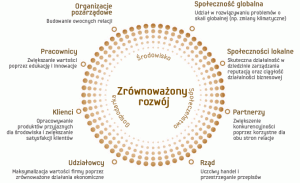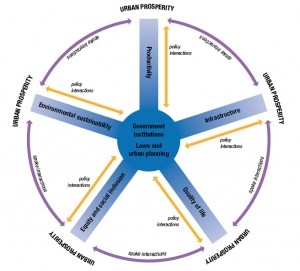How joyful it is to wander narrow streets of a historical city from one kingdom of scent to another![1] says Juhani Pallasmaa in his book about architecture and senses.
The scent of a city builds its flavour and identity, even if its quite peculiar, for example in a musty Venice or backstreets of old towns with sour and oliy smells coming from the back of restaurants and bars.
The smell is subjective. It depends on personal features, condition and emotional attitude to its source. Yet, the real challenge of air quality in an urban area is not the mix of natural smells, not even those strong and unpleasant.
The real threat is pollution which we are not able not see or smell. People assess air pollution with their senses.
They associate pollution with limited air clarity and they fear unusual air colors. Meanwhile, harmful urban air pollution is usually odourless and invisible for a human eye.
Carbon monoxide and dioxide, nitrogen oxide, gaseous organic compounds, especially benzopyrenes, ozone, suspended particulates, lead and other heavy metals are very harmful and they are perceptible only with measuring tools.
What we cannot see, we tend to ignore. Social ignorance then triggers mindless emissions of various substances into the “common” urban air. Burning domestic rubbish, having barbeque on balconies or bonfires in the backyards, cars leaving out thick exhaust fumes – it irritates, but does not frighten us.
To top it all, public authorities responsible for obeying law refuse to react, even though regulations on air pollution are explicit. There are no penalties for removing catalysers or diesel particulate filters from vehicle exhaust pipes, although advertisements for payable services in this respect can be found in newspapers.
Yet this invisible problem of polluted urban air is responsible for global annual lung cancer death rate of over 200,000[2]. And it is only one of many consequences related wth living in a polluted environment.
In 2012, in Poland, the dust exposure index PM 2.5 (pollutants diameter of 2.5 micrometer – small enough to be absorbed by the body) was 26.1 microgram per 1 cubic meter of the air, which means that it exceeded the permissible level by 30%. The city of Cracow, which fights for its right to coal-fired ovens, exceeded the limit by 80%.
Air quality in Poland compared to other EU states is not good. We are the last but one (before Bulgaria). Specific data can be found in the report from 2014 called “The condition of the environment in Poland” by the Chief Inspectorate of Environmental Protection (Główny Inspektorat Ochrony Środowiska, “Stan środowiska w Polsce, Raport 2014).
Air pollution can be monitored online thanks to analysis findings presented on the websites of regional inspectorates for environmental protection (http://powietrze.gios.gov.pl/gios/site/content/air_quality_online)
Website of the regional inspectorate for environmental protection in Małopolska – air quality monitoring system (air quality index of 13 April 2015, 7.00 – 8.00 a.m.)
Measuring data for the suspended particulates PM 2.5 in February 2015 in selected points of air quality monitoring system in Małopolska region.
The main source of air pollution in Polish cities is the combustion process in municipal and housing sectors. The process is responsible for 87% of carcinogenic emissions, whereas the vehicle transport for only 2%. It results from the use structure of primary energy products in Poland. Hard coal and brown coal account for over 50%.
On the one hand, it seems obvious how to improve the air quality in cities. On the other, the problems of energy and mining sectors don’t bode well for quick changes. If we don’t see a groundbreaking innovation for the low emission combustion in near future, we will have to fall back on any possible ecological activities, even the tiny ones, so that they can all together bring a big-scale effect.
Arch. Mariusz Szabłowski
This material has been published thanks to the financial support of the National Fund for Environmental Protection and Water Management. The sole responsibility for its contents lies with Collegium Mazovia.
[1] J. Pallasmaa, Oczy skóry – Architektura i zmysły, Instytut Architektury, Kraków 2012, p.67 (quote from the Polish edition of the book “The eyes and the skin”; own translation) [2] IARC: Outdoor air pollution a leading environmental cause of cancer deaths, WHO, Press Release No. 221, 2013









Leave a Reply
You must be logged in to post a comment.